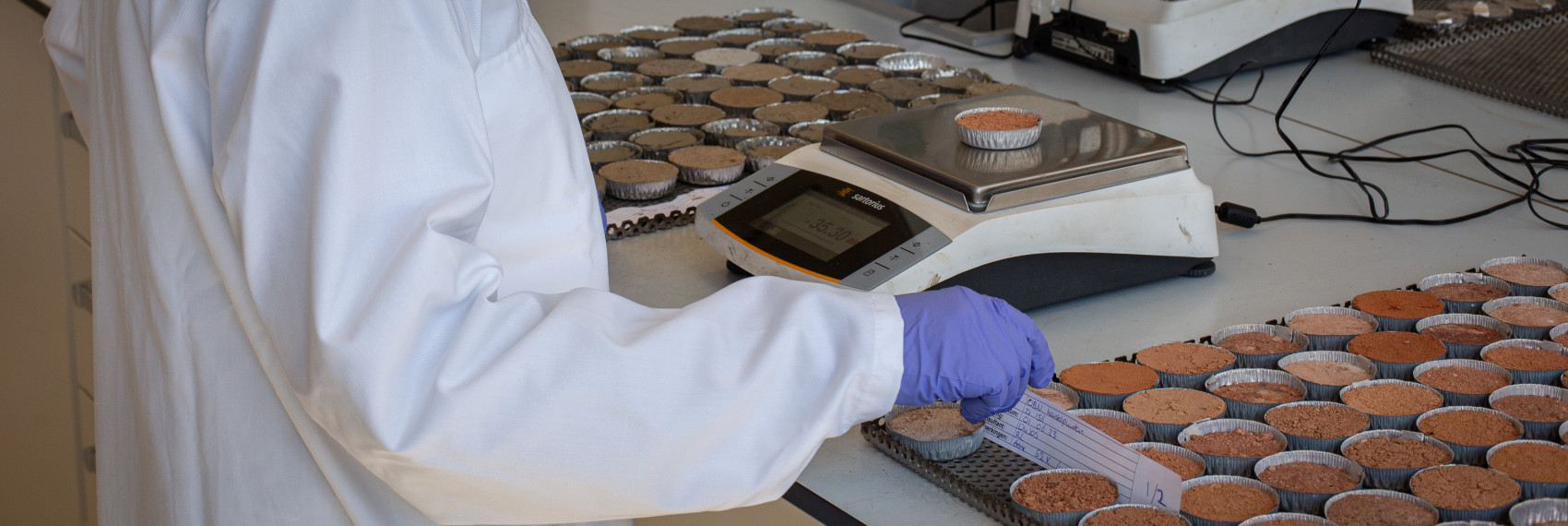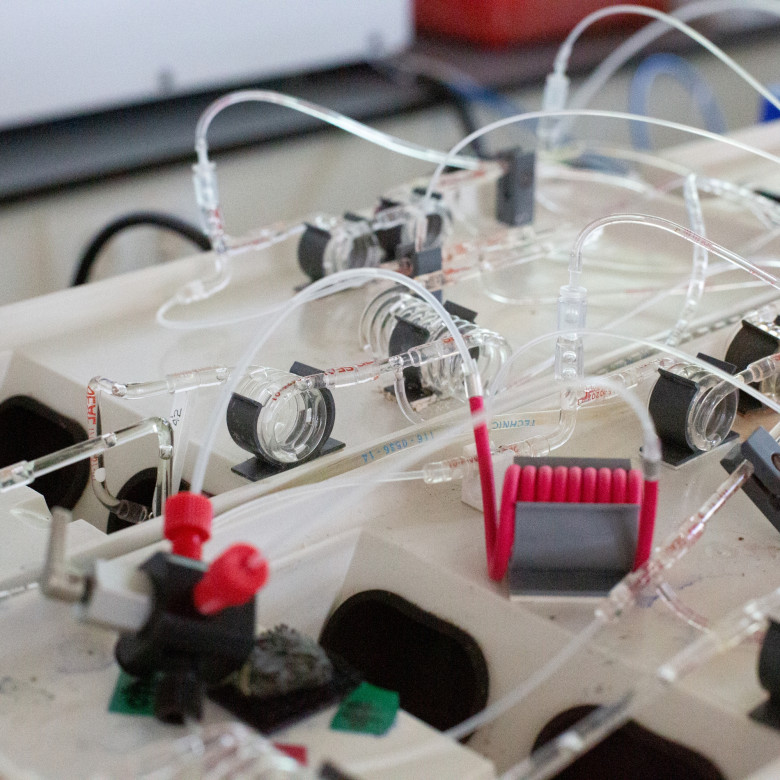Explanation of analytical methods GRIP
A large number of different methods are available to determine the composition of soil and water. In the GRIP database, the most common data have been generated using the methods listed below. There are also data from less common analyses in the database, but these have not been published.
Organic matter
To determine the moisture content of fresh soil material, moisture loss was measured by weighing soil material in duplicate in aluminium cups. The cups were filled exactly to the top (volume = 40.5 ml), so that the specific density of the soil could be determined. The cups were dried in an oven at 60°C for at least 48 hours. The cups were then weighed again and the moisture loss was calculated. The fraction of organic matter in the soil was determined via loss on ignition. For this purpose, dried soil material was burned in an oven at 550°C for 4 hours. After burning, the cup was weighed again and the loss on ignition was calculated. The loss on ignition corresponds approximately to the organic matter content of the soil.
Destruction
By digesting soil material, it is possible to determine the total concentration of almost all elements in the material. For this purpose, 200 mg of finely ground soil material was accurately weighed and transferred into Teflon destruction vessels. To the soil material, 5 ml of concentrated nitric acid (HNO3, 65%) and 2 ml of hydrogen peroxide (H2O2, 30%) were added, after which the vessels were placed in a destruction magnetron (Milestone microwave type mls 1200 mega or Ethos Easy). After destruction, the destruate was accurately transferred into a 100 ml volumetric flask and supplemented to 100 ml with demineralised water. The destruate was stored at 4 °C until further analysis on the ICP-OES.
Olsen extraction
This is an extraction of dried soil with 0.5 mol/l of sodium bicarbonate (NaHCO3), with the acidity set at pH 8.5. This sodium bicarbonate causes desorption of phosphate bound as calcium phosphate, or to lime (calcium or magnesium carbonate), or to aluminium oxides. The method is mainly used for slightly acidic to alkaline soils. For this extraction, 60 ml of 0.5 mol/l sodium bicarbonate (NaHCO3) was added to 3 g of finely ground dry soil material. The pH of the extraction medium was adjusted to pH 8.5 using NaOH. For 30 minutes, the samples were shaken on a shaking machine (105 r.p.m.) after which the supernatant was collected under vacuum using pore water samplers. The extract was stored at 4 °C until further analysis on the ICP-OES.
Salt extraction
For a salt extraction, 17.5 g of fresh soil was shaken with 50 ml 0.2 mol/l NaCl for 2 hours on a shaker at 105 r.p.m. The pH was measured using an HQD pH electrode. Extracts were filtered using pore water samplers. For analysis on the ICP-OES, part of the filtrate was acidified with nitric acid (final concentration 1%) and stored at 4 °C until further analysis. For analysis on the auto-analysers, non-acidified filtrate was stored at -20 °C until further analysis.
Pore water (soil moisture)
pH was measured using a standard Ag/AgCl2 electrode connected to a radiometer (Copenhagen, type TIM840). The amount of dissolved inorganic carbon (TIC: CO2 and HCO3) was determined using infrared gas analysis (ABB Advance Optima IRGA). Alkalinity was determined by titrating part of the sample with 0.01 mol/l hydrochloric acid to pH 4.2. Here, the number of equivalents of acid added per litre is the alkalinity. The EGV was determined using a HACH EGV electrode connected to an HQD meter. The samples for the auto-analyser were stored at a temperature of -20 ºC until analysis. Samples for the ICP-OES were acidified with nitric acid (final concentration 1%) and stored at 4 ºC until further analysis.
Elemental analysis (ICP and auto-analysers)
The concentrations of calcium (Ca), magnesium (Mg), aluminium (Al), iron (Fe), manganese (Mn), phosphorus (P), sulphur (S; as a measure of sulphate), silicon (Si) and zinc (Zn), as well as the heavy metals, were determined using an Inductively Coupled Plasma Spectrophotometer (ICP-OES, ARCOS MV or GREEN DUO, Spectro, Kleve, Germany). Nitrate (NO3-), ammonium (NH4+) and phosphate (PO43-) concentrations were determined colorimetrically with a Seal auto-analyser III using salicylate reagent, hydrazine sulphate and ammonium molybdate/ascorbic acid, respectively. Chloride (Cl-) was determined colorimetrically with a Bran+Luebbe auto-analyser ΙΙI system using mercurithiocyanide. Sodium (Na+) and potassium (K+) were determined flame photometrically using a Sherwood Model 420 Flame Photometer.

